Army Engineers Oversaw the Military Reconstruction of Japan in the Aftermath of World War II
Under the terms of surrender that ended World War II, Japan fell under Allied occupation. U.S. Army engineers faced a daunting challenge in constructing facilities for the occupation forces and rebuilding the defeated country’s infrastructure. The immediate postwar standard of living in Japan had sunk to subsistence levels and U.S. Army Air Force bombing raids had destroyed much of the islands’ industrial base. Most Japanese roadways were originally designed for light vehicle traffic and frequently were unsurfaced, while railroads in Japan were of differing gauges. Unskilled labor was plentiful but craftsmen were scarce. Functioning sewage systems were nonexistent. To complicate matters, at the occupation’s outset, the U.S. did not consider Japanese construction firms to be financially sound, nor did the firms operate with insurance or bonding.
When Gen. Douglas MacArthur took charge of the Supreme Command for Allied Powers (SCAP) in September 1945, he created the equivalent of an engineer district—the Army Construction Agency, Japan—to undertake reconstruction work, with the Army Forces Pacific theater engineer performing project review. However, the engineering support for the occupation was the responsibility of engineers from the U.S. Eighth Army, the Sixth Army Engineers out of Kyushu, and elements of the 5th Air Force Engineers. Additionally, to overcome a shortage of engineer troops, the Army Construction Agency hired local laborers.
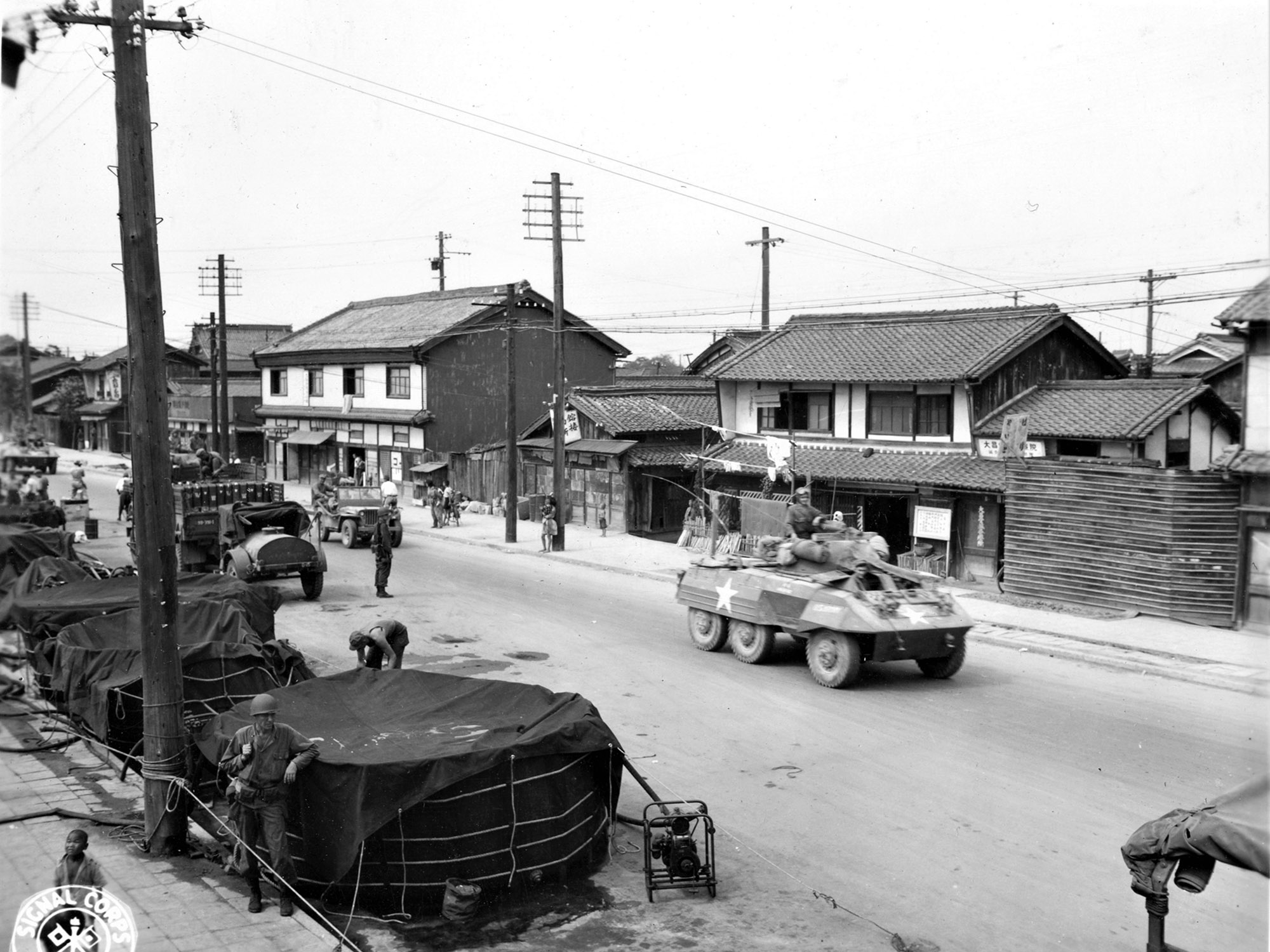 |
|
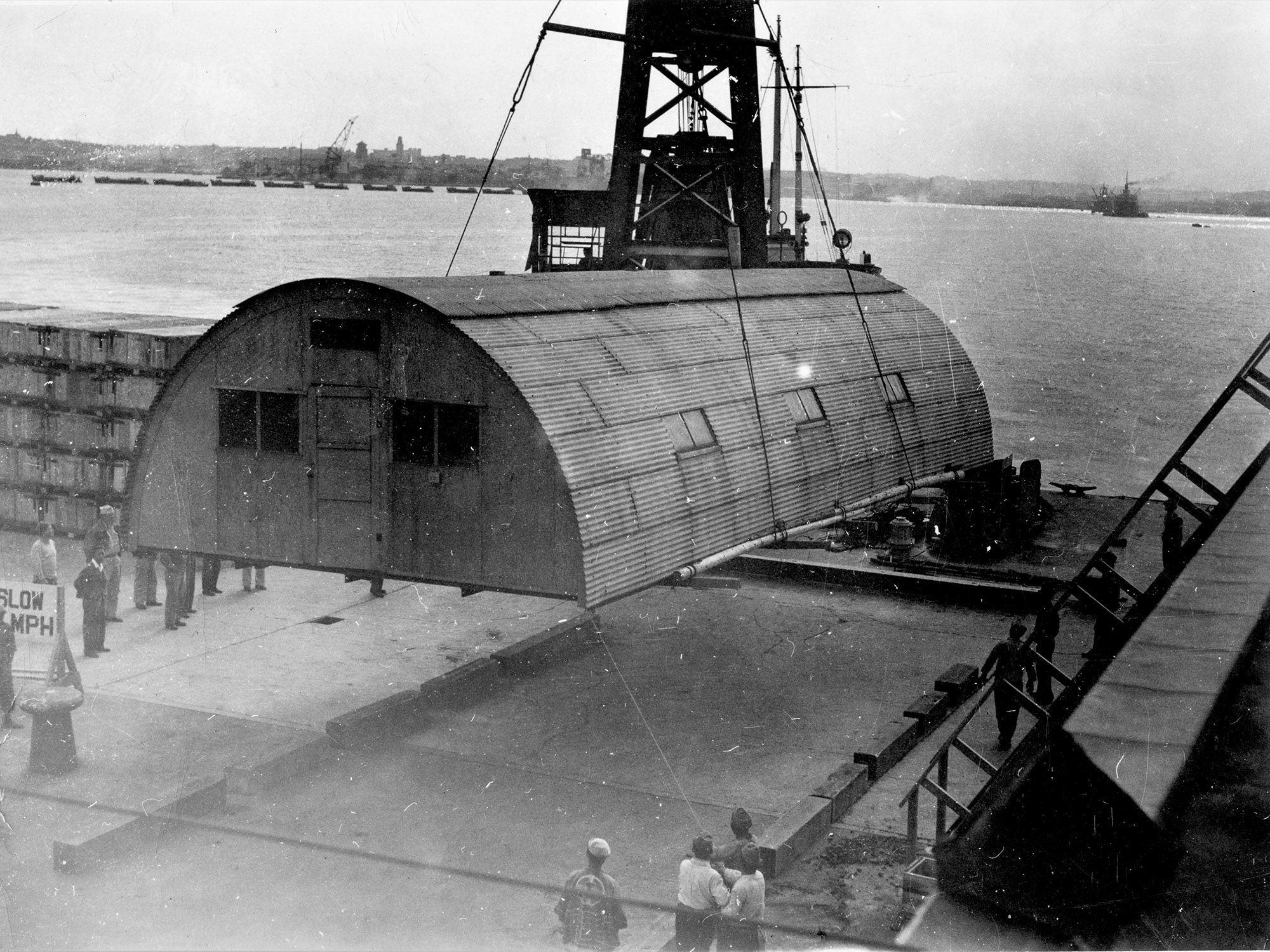 |
| Military vehicles roll down a street in Osaka, Japan, past the portable canvas tanks of a water purification station run by the 323d Engineers, 98th Division, 1945. |
|
Quonset hut, originally barracks for the 736th Engineers, is set in place to be reused as office space by the 598th Engineer Base Depot, 1947. |
Unlike with the occupation of Germany that followed the collapse of the Nazi regime, the Japanese government remained intact, and it bore the costs of occupation and rebuilding. The SCAP essentially organized a thin military superstructure over the Japanese government to carry out the rebuilding of infrastructure. While Allied occupation forces in Japan were self-sustaining in regard to food, clothing, ammunition, and other essential supplies, they had to procure lodging and office space, certain communication facilities, construction supplies, and labor from the local economy. At first American area commanders kept projects moving by levying requisitions on local Japanese governments. After some abuses arose, later requirements had to process through General Headquarters and the military government’s Procurement Division. Eventually the Japanese government was able to procure its own construction contractors. All were Japanese companies either created or expanded in response to the building requirements.
A linchpin of the U.S. reconstruction effort in Japan was a base-building program to construct facilities supporting the occupation forces. While in the early part of the occupation the U.S. military engaged in or supervised the Japanese in humanitarian and other relief-related civilian activities, the bulk of the engineering projects it performed involved converting existing facilities for the Eighth Army and other military units. Engineers provided housing, hospitals, airfields, and administrative and operational structures to American garrison divisions by rehabilitating former Imperial Army military camps. They also converted Japanese housing units and built new ones to provide 15,000 residential units for lodging the American military and their dependents.
Other than some prefabricated buildings and petroleum tanks, building materials came from the local economy. Former Japanese military ports and industrial plants became not only U.S. Army depots and logistics staging areas but also dual-use facilities with civilian applications. Regional post engineers provided repair and utilities support to all installations through utilities detachments and technicians under their charge. Because of the lack of heavy earth-moving equipment and Japanese civilians to operate it, engineer units performed all earthworks. By 1950, Army engineers had carried out total construction valued at more than $400 million.
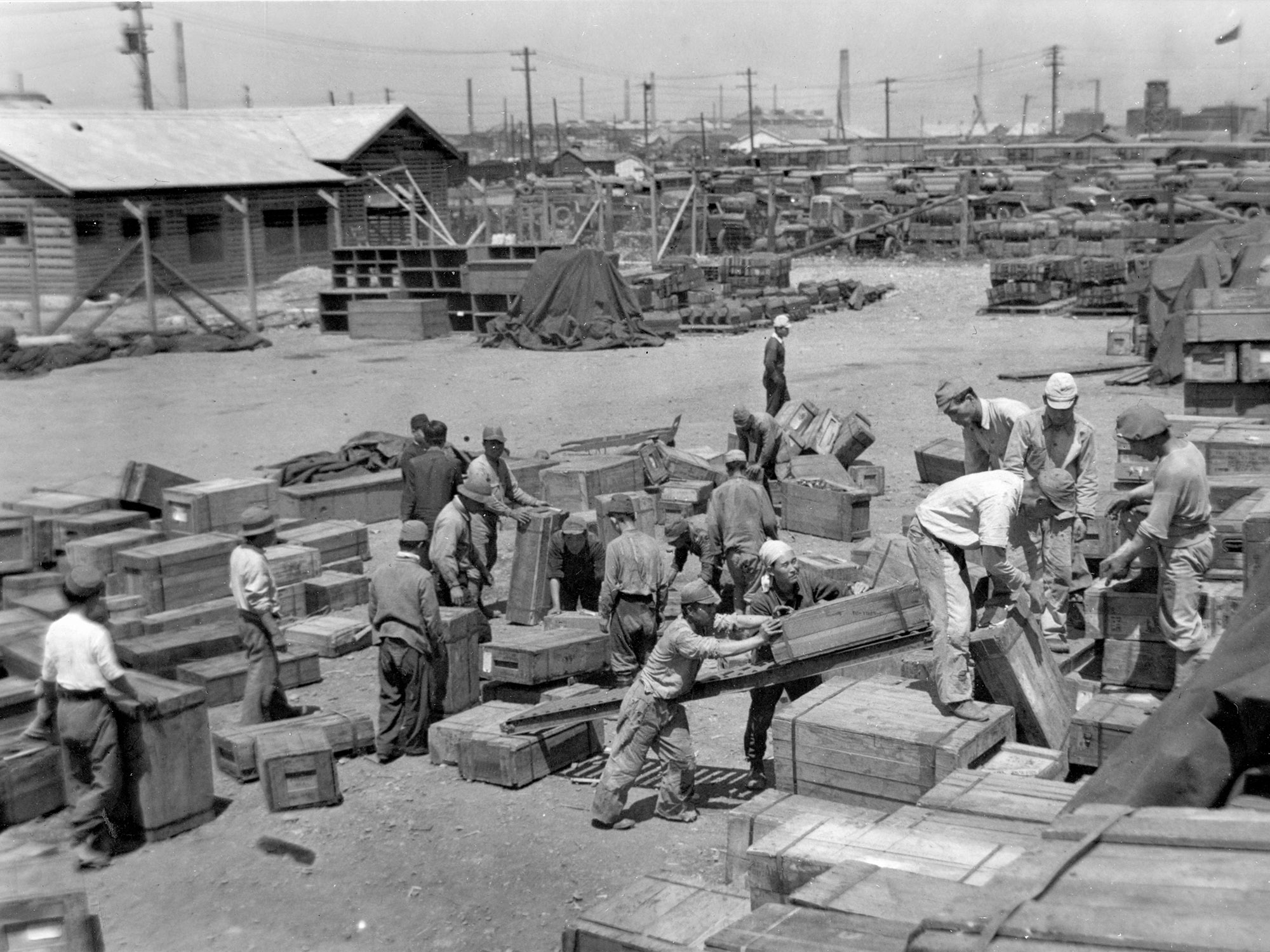 |
|
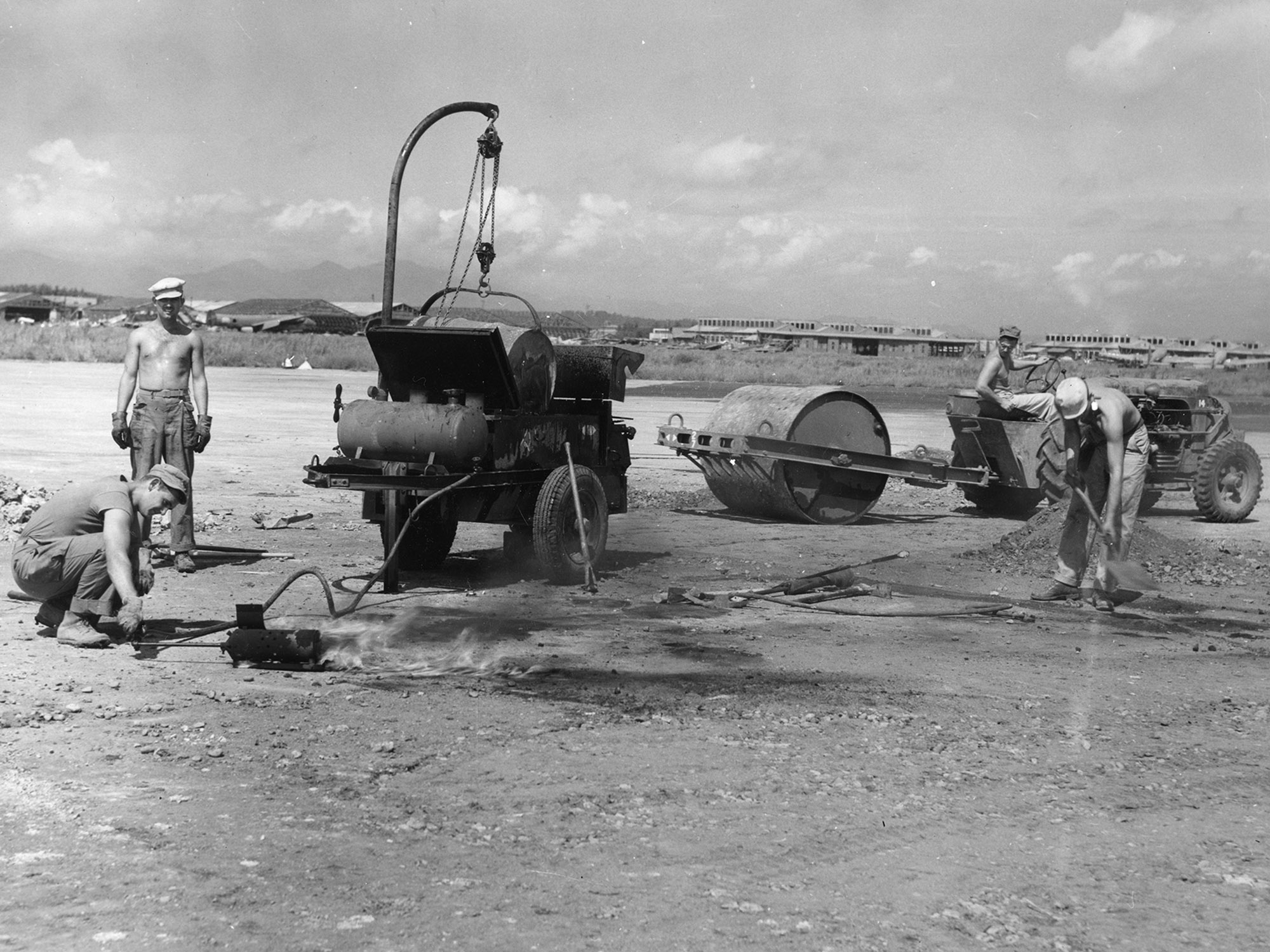 |
| The 598th Engineers, Parts Supply Division, trying to bring order out of chaos as heavy shipments arrive from other commands to the Yokohama base depot, early 1948. |
|
The 872d Airborne Engineers repair the runway on Atsugi Airdrome, Japan. The asphalt "kettle" was used to liquefy barrels of asphalt that was spread over areas under repair, 1945. |
With the outbreak of the Korean War in June 1950, the new and extensive construction support program in Korea had a direct effect on Japan’s rehabilitation, which was still lagging because of a lack of raw materials. After the United Nations entered the Korean War, Japan became the principal supply depot for UN forces. Procurement in Japan totaled nearly $1 billion annually by 1953 and involved contracts with 3,000 Japanese firms.
At the end of 1951 the Japanese negotiated a projected end to Allied occupation. The peace treaty that went into effect in 1952 allowed for a mutual defense pact under which U.S. forces remained in Japan. This agreement launched the nearly permanent base construction effort that later fell under the purview of the Corps of Engineers’ Far East District in 1957 and the Japan Engineer District in 1972. The work of Army engineers, although begun in the wake of a war that saw such terrible devastation, in large measure contributed to the conversion of a former enemy into both an advanced, democratic nation and a stable bulwark for American interests in the wider region. This effort lives on in the continued cooperation among uniformed and civilian employees of the U.S. Army Corps of Engineers, its contractors, other U.S. agencies abroad, local nationals, and the host government.
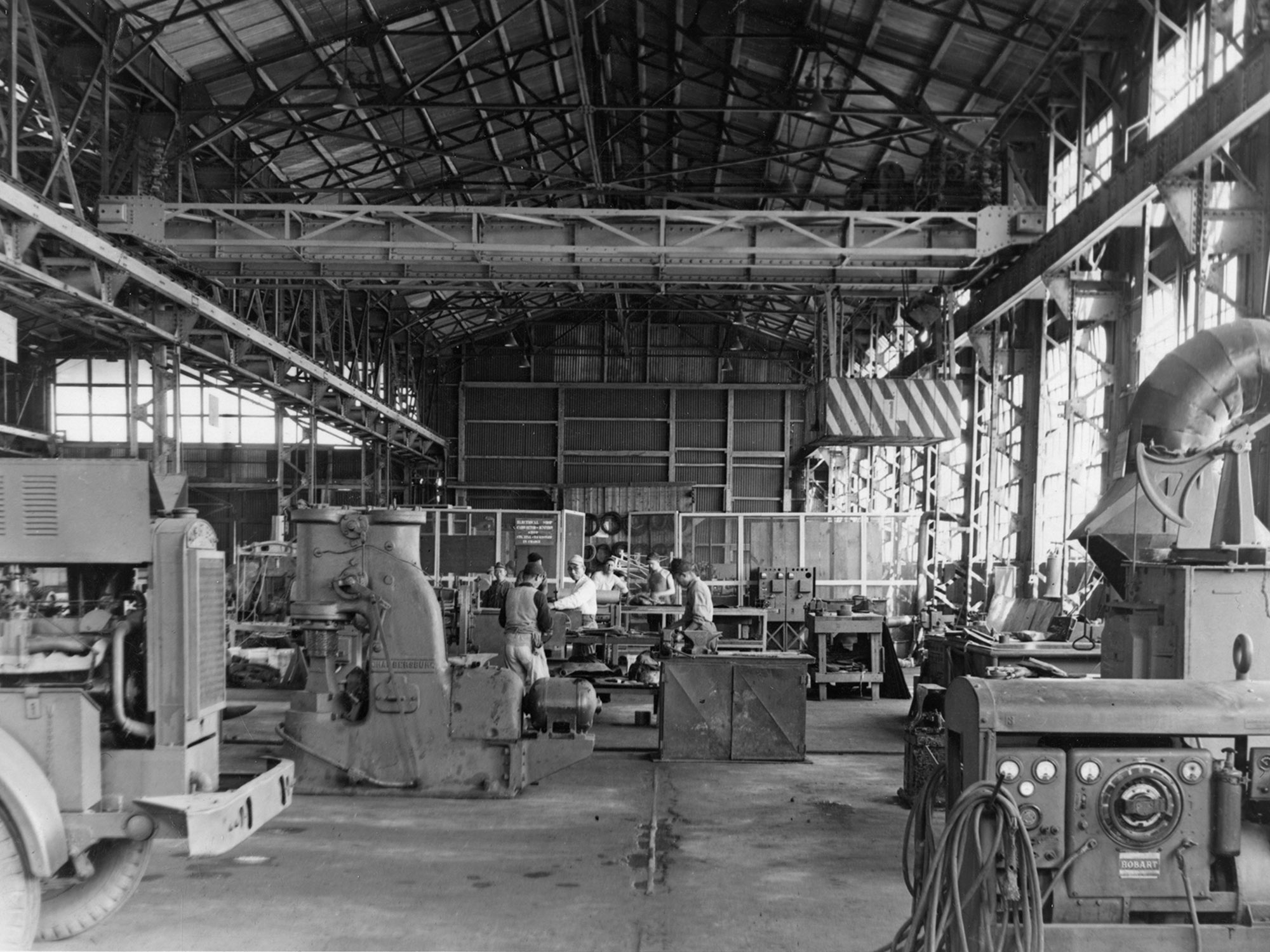 |
| Forge and blacksmith shop, 598th Engineer Base Depot, Yokohama, Japan, 1948. |
All photos from Office of History, HQUACE
* * *
September 2003. Revised March 2021. No. 074.